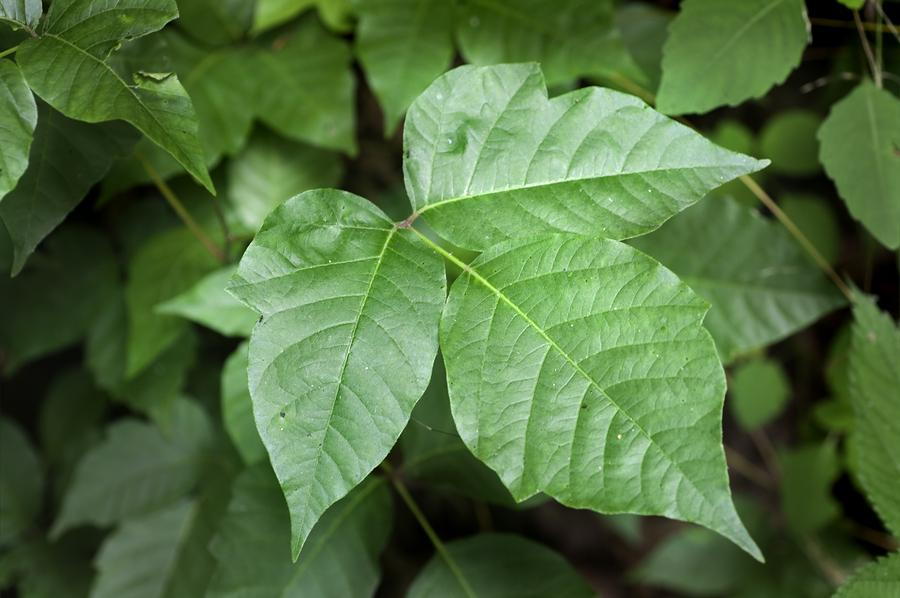Poison Ivy: Prevention & Relief
posted: Aug. 15, 2017.
 If you spend time outdoors, then you’ve probably come into contact with poison ivy, poison oak or poison sumac at some point in your life. The plants’ oily sap, known as urushiol causes many people to break out in an itchy rash. Urushiol is colorless or pale yellow oil that exudes from any cut part of the plant, including the roots, stems and leaves.
If you spend time outdoors, then you’ve probably come into contact with poison ivy, poison oak or poison sumac at some point in your life. The plants’ oily sap, known as urushiol causes many people to break out in an itchy rash. Urushiol is colorless or pale yellow oil that exudes from any cut part of the plant, including the roots, stems and leaves.
The intensely itchy rash is an allergic reaction to the sap and can appear on any part of the body. The severity of the reaction varies from person to person, depending on how much sap penetrates the skin and how sensitive the person is to it. The most common symptoms include:
- Itchy skin
- Redness or streaks
- Hives
- Swelling
- Small or large blisters
- Crusting skin when blisters have burst
When other parts of the body come into contact with the oil, the rash may continue to spread to new parts of the body. A common misconception is that people can develop the rash from touching another person’s poison ivy rash. However, you cannot give the rash to someone else. The person has to touch the actual oil from the plant in order have an allergic reaction.
When to See Your Dermatologist
Generally, a rash from poison ivy, oak or sumac will last 1 to 3 weeks and will go away on its own without treatment. But if you aren’t sure whether or not your rash is caused by poison ivy, or if you need treatment to relieve the itch, you may want to visit a dermatologist for proper diagnosis and care. You should also see your dermatologist if the rash is serious, in which case prescription medicine may be necessary. Swelling is a sign of serious infection.
Other signs that your rash may be serious include:
- Conservative treatments won’t ease the itch
- Rash begins to spread to numerous parts of the body
- Pus, pain, swelling, warmth and other signs of infection are accompanying the rash
- Fever
- Facial swelling, especially on the eyelids
- Rash develops on face, eyelids, lips or genitals
- Breathing or swallowing becomes difficult
To avoid getting the rash caused by poison ivy, oak or sumac, learn how to recognize what these plants look like and stay away. Always wear long pants and long sleeves when you anticipate being in wooded areas, and wear gloves when gardening. If you come into contact with the plants, wash your skin and clothing immediately.
Poison ivy, oak and sumaccan be a real nuisance and often difficult to detect. As a general rule, remember the common saying, “Leaves of three—let them be.” And if you do get the rash, visit our office for proper care.

